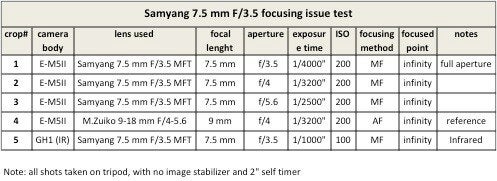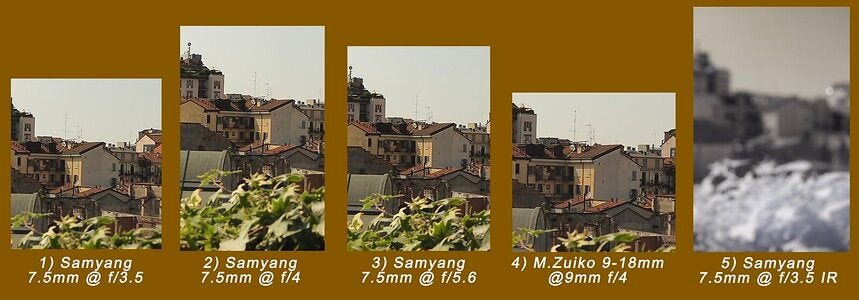jk4u59
Mu-43 Regular
You're right. But if you check my latest post, i found a site that reports lots of focusing problems for the fisheye lenses of my same model (i.e. 7.5 mm MFT), due to a small miscalibration of its rear element (small in dimensions but important in spoiling the results!).I'm not convinced you can bring your 7.5mm back into focus with your IR conversion with modifications.
If it were just a simple matter of IR phase shift, I shouldn't be able to focus my 7-14 Panny at the 7mm end. Although my 470nm EM-1.1 refuses to autofocus at 7mm (8-14 is fine), it'll still manually focus and capture wonderful images there. The 7-14 works fine on all my other bodies at all focal lengths, both IR and normal spectrum.
So I'm thinking your problem is not just phase shift, it's flange distance +/- filter thickness +/- phase shift.
You can mess with the flange distance via spacers, but I wouldn't do this unless you never plan on using this lens on any other camera.
It's a lot of trouble to bring one lens into compliance. Not sure it's worth the effort.
Anyway, before unscrewing anything I'll carefully check the behavior of my lens at infinity in visible light, using my OM-D E-M5II body.


